6 Famous Foreign Wars You Didn’t Know Filipinos Fought In
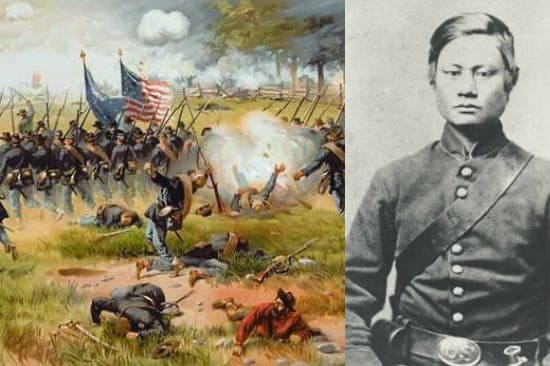
Although the Philippine Revolution, the Philippine-American War, the World War II, and the Korean War are generally what comes to mind whenever someone asks what wars Filipinos fought in, it’s good to know that our ancestors actually played a vital role in the many famous foreign conflicts of history.
After all, it’s only fitting we give them the recognition (or the infamy) they so rightfully deserve. We may never look at history the same way again.
Also Read: 8 Epic Battles in History Where Filipinos Kicked Ass
1. American Civil War (1861 – 1865)
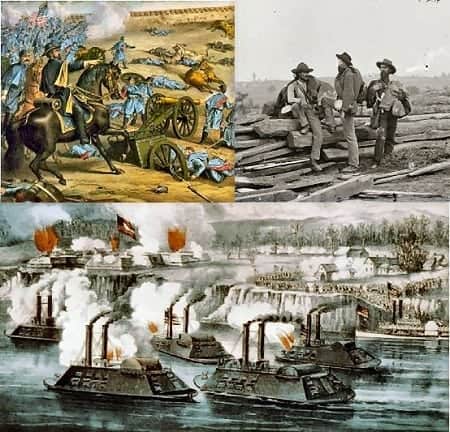
A good number of Filipinos found themselves on both sides of the fence during the American Civil War which pitted the Union against the Confederacy. As we can recall, several prickly issues—including the abolition of slavery—paved the way for several southern states to break from the Union and form the Confederate States of America.
The secession eventually culminated in a bloody four-year civil war which the Union won in the end. However, the conflict also devastated much of the United States and left more than half a million Americans dead.
During this time, a good number of Filipinos aside from the Manilamen fought for either the Union or the Confederacy. Owing to their integration, many already had English-sounding names when the Civil War took place; however, others retained their Hispanic or Chinese surnames, hence the reason why some were designated as either Spanish or Chinese.
But where did these Filipinos come from?
In the book “Manila Men in the New World” by Floro L. Mercene, a story is told about the Filipino crew who worked inside the Manila Galleons. These were the trading ships which sailed back and forth between Manila and Acapulco. It is said that some of these Filipino workers eventually jumped ship and settled in Mexico and the Americas.
With the help of the documents found at the National Archives in Washington and military records in Massachusetts and New Hampshire, Nestor Palugod Enriquez, a former US Navy man, discovered that there were at least 31 Filipinos who joined the Civil War.
Also Read: Larry Itliong: A Forgotten Badass Hero of Filipino Immigrants
Among them were Caystana Baltazar, Andrew Belino, Antonio Ducasin, and Sabas Pilisardo. These four young men were born in Manila and described as having “black eyes, black hair, and dark complexion”—typical Pinoy qualities. Another Philippine-born soldier was Felix Cornelius Balderry who enlisted on December 7, 1863 in Kalamazoo. He joined Company A, 11th Michigan Volunteers.
Before the war, Balderry worked for a seafarer named Joseph Foster. He later moved to Michigan where he became a farmhand. Here are some photos of Balderry while wearing what appears to be his Civil War uniform:
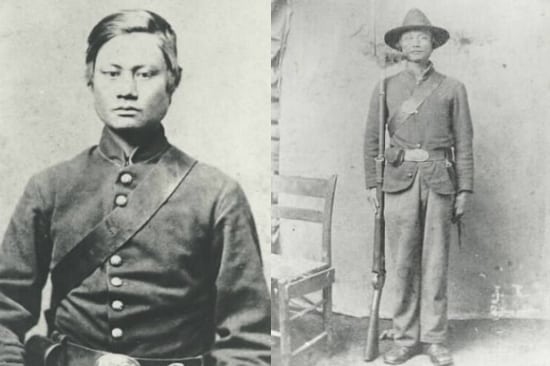
Balderry served “in the western theater, and was sent to hospital at Nashville in June 1864 {1865?}.” After the war, he returned to his hometown, worked as a tailor, and married a woman named Ada May Burns. He died of tuberculosis in 1895 at the age of 49. If you’re from Michigan, you can still visit his tomb at the Leonidas Cemetery (see photo below).

2. Expeditions to Indochina (16th century and 1858 – 1862)
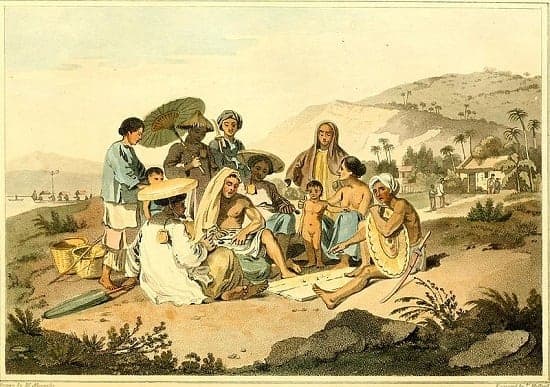
A few hundred years before the Vietnam War, Filipinos had already been to Indochina twice. The first instance happened in the last decade of the 16th century, when a Filipino-Spanish expedition was sent to Cambodia to assist its king and his family in retaking his throne from the neighboring kingdom of Siam (modern-day Thailand) and local usurpers.
After a while, the locals eventually got fed up with the foreigners (the Spanish only helped out because they wanted a foothold in the peninsula), leading them to massacre and destroy the Filipino-Spanish garrison in Phnom Penh in 1599.
Also Read: A Touching Story of How Filipinos Saved A Million Lives At The Most Unexpected Place
The second incursion occurred more than two hundred years later, in 1858. This time it was the French who sought the assistance of the Spanish in securing Cochinchina (the southern one-third of Vietnam). With an expeditionary force composed mainly of Filipino soldiers and Spanish officers, the French succeeded in defeating the natives en route to establishing their colony in Indochina.
3. Taiping Rebellion (1850 – 1864)
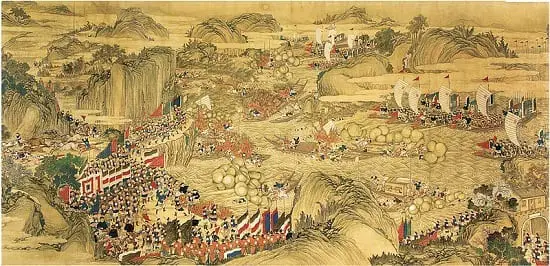
One of the most devastating wars of all time (the death toll was larger than World War 1), the Taiping Rebellion pitted China’s Qing dynasty and a Franco-British alliance against that of the Christian millenarian sect Taiping Heavenly Kingdom whose leader Hong Xiuquan claimed to be the brother of Jesus Christ.
In this 14-year war which ended in a Qing victory, at least 20 million people were said to have perished. Amid the carnage, many foreign mercenaries could be found offering their services. The most famous of them all, an American named Frederick Townsend Ward, achieved his reputation due to his string of victories over the Taiping.
He also earned the admiration of the Qing—and the hatred of the Europeans and other Westerners—for training the Chinese in modern military tactics. His personal fighting force—named the “Ever Victorious Army” by the Qing—outfought their enemies by using such tactics.
Also Read: Thousands in China are descendants of an ancient Filipino king. Here’s how it happened.
As for the members, the army was composed mostly of Chinese but Ward kept around 200 Filipinos as his personal bodyguard due to their fighting prowess which they showed during the group’s earlier campaigns. In fact, Ward’s second-in-command was a Filipino named Vicente Macanaya and was supposed to have succeeded the American after he died in one battle. However, he was later bypassed for promotion in favor of Charles Gordon, a British soldier.
4. Spanish Civil War (1936 – 1939)
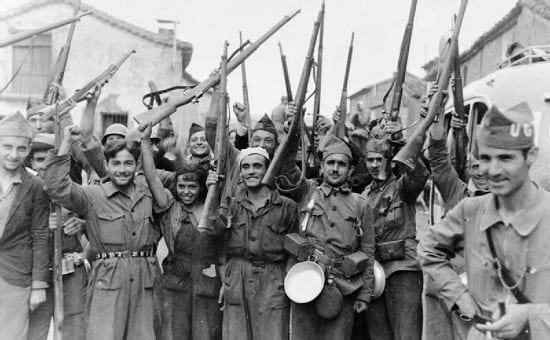
As before, several Filipinos found themselves once again fighting in the land of their former colonizer during the Spanish Civil War which pitted the left-leaning Spanish Republic against the fascist Nationalists led by the dictator Francisco Franco.
After a bloody three-year war which ended in the deaths of half a million people, Franco and the Nationalists eventually won. As usual, Filipinos fought for either the Republicans or the Fascists depending on their ideology of choice.
The Spanish Civil War also became a point of contention for the Filipino-Spanish community in the Philippines.
Prominent personalities such as Enrique Zobel de Ayala supported the local party version of the Spanish Falange (fascists) while socialists such as Pedro Abad Santos (Luis Taruc’s mentor) supported the Republican efforts. At one point, Bishop Gregorio Aglipay even threatened to send thousands of Filipino volunteers to fight for the Republicans.
There were also Filipinos who feared the local fascists would act as a fifth column for the Japanese when it became apparent they were going to invade the Philippines.
Also Read: How Spain “Almost” Abandoned Philippines in 1765
5. The European Theater of World War II (1939 – 1945)
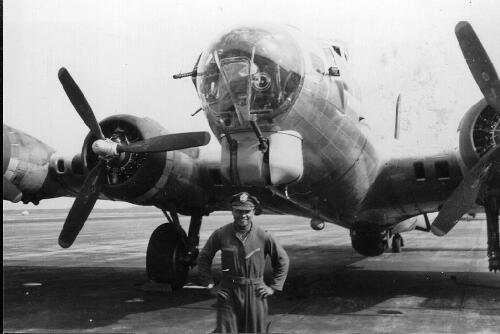
While we may equate World War II as a conflict primarily with Japan, the truth is that lots of Filipinos fought in the other theaters of World War II.
For example, Rudolph Davila, an American born to a Spanish father and Filipino mother, extensively participated in the Allied invasion of Italy and earned a Distinguished Service Cross (which was later upgraded to a Medal of Honor) after he single-handedly prevented his company from being slaughtered in a German ambush.
Also Read: 10 Facts About World War II That Never Made It To Your Philippine History Books
Another, a full-blooded Filipino named Isidro Juan Paredes, also saw action in Europe as part of the Air Transport Auxiliary of the British. He died during the war in a plane accident and his body was later transported back to the Philippines.
Meanwhile, his fellow pilot, a Boholano named Stanley Sabihon, earned fame as the only Filipino to fly a B-17 bomber during the war, having participated in 51 missions and clocking in 280 combat hours. Due to his flying ability, his crew described him as the “best pilot in the business.” Unlike Paredes, Sabihon survived World War II, flew more missions during the Korean War and died an old man in 1981.
6. Vietnam War (1955 – 1975)
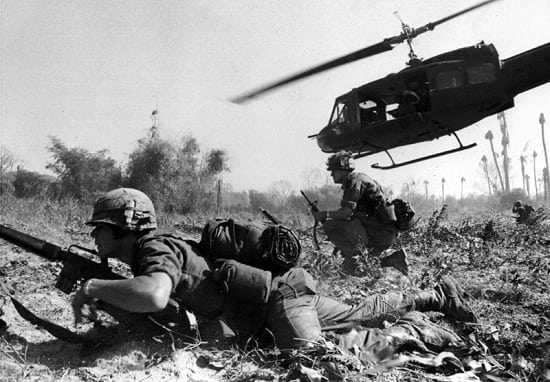
Philippines sent out a contingent of “non-combat engineers” in 1966 as part of its contribution to American-backed South Vietnam during the Vietnam War. However, lesser-known is the fact that Filipino mercenaries were already working in the shadows thirteen years before the arrival of the engineers.
The men were under the employ of the infamous CIA chief Edward Lansdale who had previously stayed in the Philippines and was hugely instrumental in helping suppress the Hukbalahap rebellion. Already proficient in dirty warfare, Lansdale instructed the Filipinos to sabotage facilities and conduct assassinations in order to sow chaos among the communists.
Unfortunately for him, many of his men ended up being caught and dealt with by the North Vietnamese before they could do some real damage.
Also Read: 6 Reasons Why Ramon Magsaysay Was The Best President Ever
References
301st Bombardment Group World War II,. Stanley Sabihon. Retrieved 15 December 2015, from http://goo.gl/CCBqGY
Arlington National Cemetery Website,. (2002). Rudolph B. Davila, Second Lieutenant, United States Army. Retrieved 15 December 2015, from http://goo.gl/3pR7sv
Commonwealth War Graves Commission,. Casualty Details: Paredes, Isidro Juan. Retrieved 15 December 2015, from http://goo.gl/g6TM7R
Mercene, F. (2007). Manila Men in the New World: Filipino Migration to Mexico and the Americas from the Sixteenth Century. UP Press.
Rodao, F. (1994). Spanish Falange in the Philippines, 1936-1945. Philippine Studies: Historical And Ethnographic Viewpoints, 43(1).
Sharpe, M. (2001). The Taiping Rebellion.
Sy, N. (2014). Beyond Golan: Filipino global soldiers in the eyes of history. Rappler. Retrieved 15 December 2015, from http://goo.gl/K8AFsA
The Official Website of the Philippine Embassy in Phnom Penh, Cambodia,. Philippines-Cambodia Relations. Retrieved 15 December 2015, from http://goo.gl/Hwe95Z
VietnamWar.net,. Edward Landsdale. Retrieved 15 December 2015, from http://goo.gl/UaadLi
FilipiKnow
FilipiKnow strives to ensure each article published on this website is as accurate and reliable as possible. We invite you, our reader, to take part in our mission to provide free, high-quality information for every Juan. If you think this article needs improvement, or if you have suggestions on how we can better achieve our goals, let us know by sending a message to admin at filipiknow dot net
Copyright Notice
All materials contained on this site are protected by the Republic of the Philippines copyright law and may not be reproduced, distributed, transmitted, displayed, published, or broadcast without the prior written permission of filipiknow.net or in the case of third party materials, the owner of that content. You may not alter or remove any trademark, copyright, or other notice from copies of the content. Be warned that we have already reported and helped terminate several websites and YouTube channels for blatantly stealing our content. If you wish to use filipiknow.net content for commercial purposes, such as for content syndication, etc., please contact us at legal(at)filipiknow(dot)net